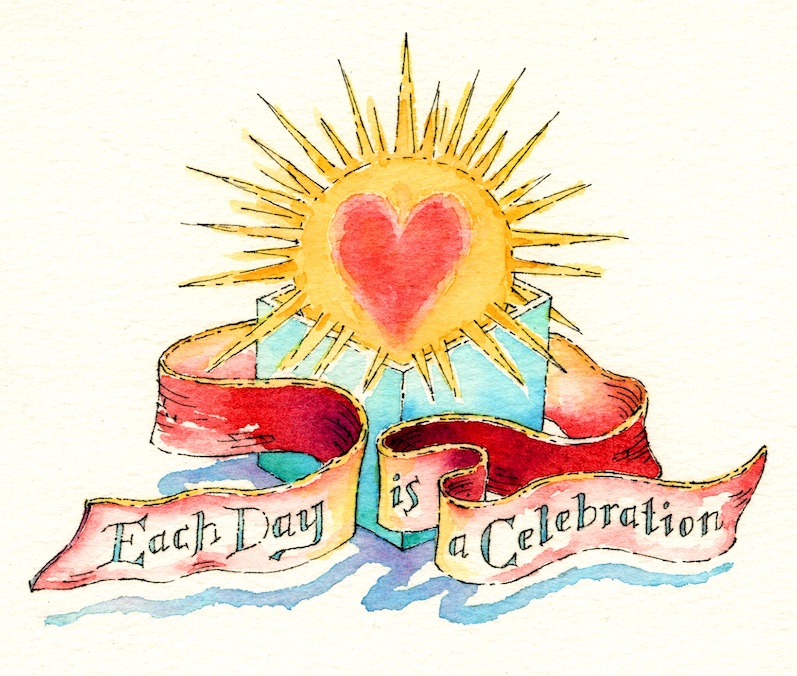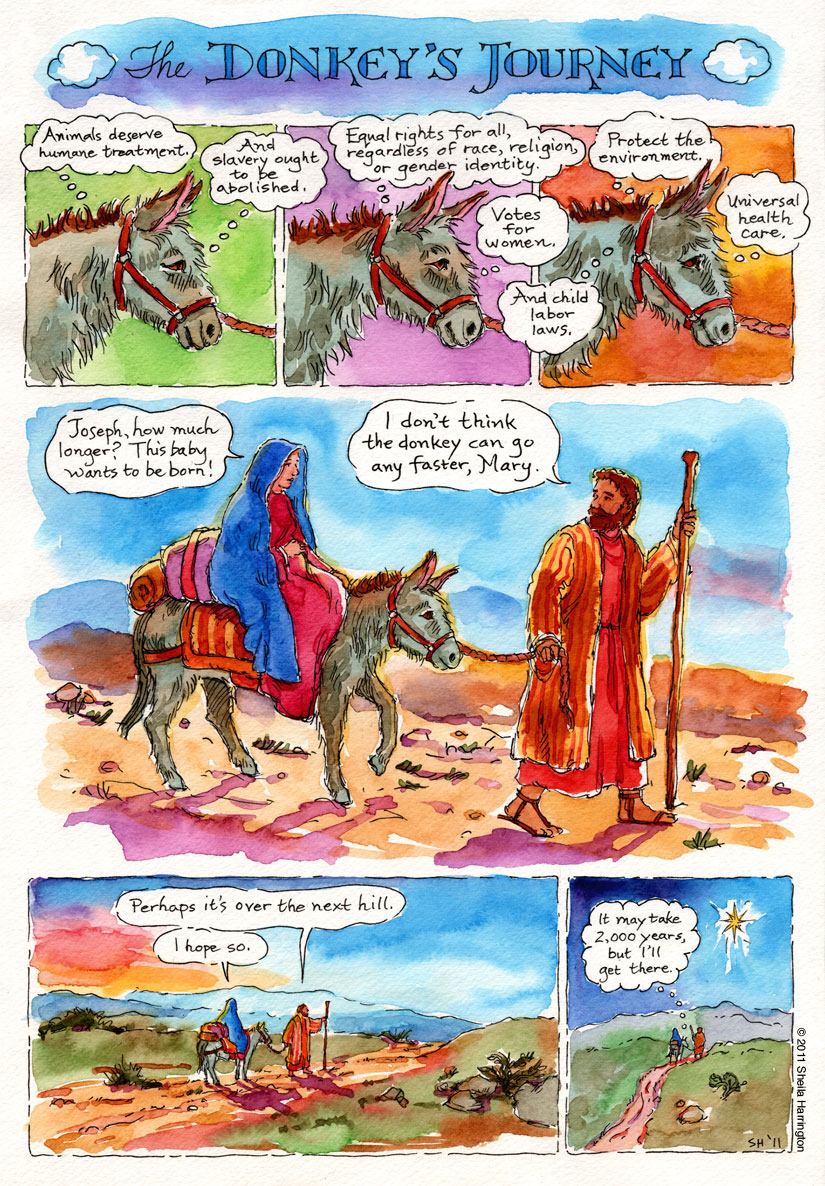Hmm, you may be saying. Isn’t this a DECEMBER post?
But no, today is a January double anniversary. On this day in 1870, caricaturist Thomas Nast first used the donkey as a symbol for the Democratic party.
A donkey had been used decades earlier in the 1830s during the campaign of Andrew Jackson. When his political opponents labeled him a “jackass” for his stubbornness, Jackson took advantage of the insult and used the animal on his campaign posters to represent instead his unyielding tenacity of purpose.
Nast, however, in his cartoon, “A Live Jackass Kicking a Dead Lion” intended his depiction to rebuke the Democratic party for its disrespectful treatment of the recently deceased Edwin M. Stanton, Abraham Lincoln’s controversial Secretary of War. Nast went on to use the Democratic donkey in later, similarly admonishing cartoons, and the association eventually became permanent. The donkey symbol has the advantage of interpretation by the viewer as representing either 1. (if you are anti-Democratic) foolish obstinacy, or 2. (if you are pro-Democratic) humble determination.
Both the names and the respective goals of American political parties have evolved over the years. It was, after all, Republican Abraham Lincoln who authored the Emancipation Proclamation, after the newly formed Republican party split off from the slavery-supporting Whigs. But, over the last century, the Democratic donkey has become a symbol, both respected and derided, of progressive values. At times it seems the Democratic party is mired in confusion, lacking direction, and anything but resolute. But if we take the veeerry looong view, we can see, beyond party affiliation, the ultimate triumph of progressive goals.
Which brings us to our second anniversary, the birthday on January 15th of Dr. Martin Luther King, Jr. (1929-1968), whose dedication, passion, eloquence and non-violent means effected tremendous change in attitudes and legislation. King is now such a heroic cultural icon that it might even surprise some of today’s schoolchildren to learn of the bitterness and vile tactics of his enemies, the assaults and death threats directed against him and his followers, the fierce opposition to what strikes us today as self-evident fairness and justice.
With his lifelong struggle for desegregation and civil rights, his goal to end poverty and compensate descendants of slaves, his protest against United States support of Latin American dictators, his encouragement to redirect government funds from the Vietnam War toward healing of social ills, he was clearly a man way ahead of many of his small-minded fellow citizens. And in this he seemed, sadly, destined for martyrdom.
Today the Montgomery Bus Boycott, the March On Washington, and the passage of the 1964 Civil Rights Act are the stuff of history textbooks. And, thanks to the Internet and YouTube, we can celebrate Martin Luther King Day by listening to King’s “I Have a Dream” speech in recognition of the progress we have made. So far.

